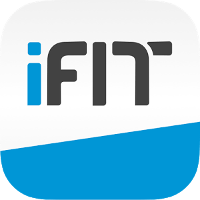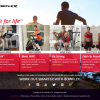- Details
- Written by Kelly Seal
- Hits: 3119
There’s no question yoga has become one of the most popular fitness activities in recent years. We've incorporated it into our daily lives and culture - Instagram is flooded with young yogis and teachers doing various poses, we dabble in meditation, and even yoga clothing for the office has become a recent trend.
Studios and facilities have popped up all over the world, too. Yoga class passes have become as popular as gym memberships. There are multiple styles of yoga - some that include chanting or sweating while others are straightforward stretch classes, depending on where your interest lies. Some teachers even give outdoor classes in local parks and green spaces.
While many of us have grown used to taking yoga classes with others, the focus is on the individual's own progress. Each person practices at a different level in accordance with his or her own body requirements. Practicing with a class is not important, except if you are motivated by the social aspect of attending a class.
- Details
- Written by Kelly Seal
- Hits: 3762
Thanks to Smartphones and the Internet, we can have anything we want at the swipe of a screen. Cupcakes at 2:00am? No problem. Spaghetti and garlic rolls for dinner? Got you covered. The problem with all this accessibility however, is that we are tempted far too often to make unhealthy choices.
That’s why meal kit delivery services can be an interesting option, especially if you are busy or too tired to think about cooking. Or if you are tempted too often to choose what’s easy instead of what’s healthy. Instead of ordering a high-fat, high-carb dinner from a delivery service, you have all you need to make a healthy meal at home.
Meal kit services are especially helpful if you live in a crowded city, because making healthy choices can be time-consuming. The grocery store lines after work hours can get long and frustrating. Not to mention – it’s pretty easy to get overwhelmed with making dinner every night when you work long hours and take care of children, so why not have a service that not only tells you exactly what to make, but delivers the ingredients and recipe right to your doorstep?
- Details
- Written by Kelly Seal
- Hits: 2948
Are you cleaning out the garage or your closets this Spring, trying to rid yourself of possessions you no longer need? If you love the idea of lightening your load around the house and tossing what’s no longer serving you, consider extending that mindset to your overall personal health.
Spring is a great time to take inventory of our bodies to see what habits are or aren’t working for us. It’s a few months before summer, when our lives start to get really active (and the winter coats come off). Don’t you want to look and feel great, and have more energy? It’s possible with a little concerted effort.
Too often, we wait for signs that something is wrong before we make changes to our fitness routine or diet. But think how you could prevent problems down the line by being a bit more proactive today – adding more movement to each day, making healthier food choices, and creating more time for self-care.
Following are some tips to help you see where you are, and what you could be doing differently.
- Details
- Written by Kelly Seal
- Hits: 4771
You might have heard (via spokesperson Oprah Winfrey) that Weight Watchers is revamping its image. Instead of the decades-old points-for-calories program that was the company’s hallmark, it has now launched SmartPoints, a new way of looking at food intake that factors in points for things like fat and sugar content, and compares your overall food intake to how active you are.
Weight Watchers has been competing with new trendy diets like the Paleo Diet, as well as new approaches to dieting that consider the whole – diet, exercise and lifestyle – rather than just calorie intake. As a result, the company decided to step out of its comfort zone and revamp its system.
Part of the new system is SmartPoints. According to the company’s website, every food is assigned a SmartPoints value — one number based on four components: calories, saturated fat, sugar, and protein. Calories establish the baseline of how many SmartPoints values the food is worth. Protein lowers the amount of SmartPoints that something “costs.” Sugar and saturated fat increase the number.
Much like fitness tracker apps like My Fitness Pal that track food and exercise, Weight Watchers SmartPoints are also tracked through their mobile app. In addition to tracking the points for the food you eat, you can track portion size to be more accurate, as well as your day’s activities.
- Details
- Written by Kelly Seal
- Hits: 4635
Looking for a more customized approach to working out? You might want to consider the new iFit app, which provides all the fitness tracking you’ve come to love in health-related apps and wearables like My Fitness Pal and Jawbone, but its smart technology has been integrated to work with fitness equipment, too.
Instead of going to the gym, creating your own workout and trying to translate the energy you expended to your fitness tracker, iFit offers a training program built in to the app that can be used with gym equipment like treadmills, ellipticals, and bikes. You can sign in directly on the fitness equipment in the club or on your own equipment to track your workout. All your workout stats will automatically upload to your app profile. You also have access to iFit’s training opportunities, including custom-built workouts, automatic tracking, and routes powered by Google Maps.
- Details
- Written by Kelly Seal
- Hits: 4016
You might have seen Oprah Winfrey promoting Weight Watchers recently, for a very targeted reason: the long-time diet company has been losing members (about 20 million Weight Watchers members have gone inactive the past few years), so they have done a drastic reboot of the point system they made famous.
Now it seems the trend with diet programs is taking a more holistic, lifestyle approach to change. In other words, a healthy diet and exercise routine is much more important to long-term health than focusing on points and pounds.
With this in mind, Weight Watchers hired Winfrey to be their spokesperson for their new reboot “Beyond the Scale,” which focuses on a new lifestyle approach to dieting, incorporating fitness routines as well as fat and sugar intake into a new point system.

















